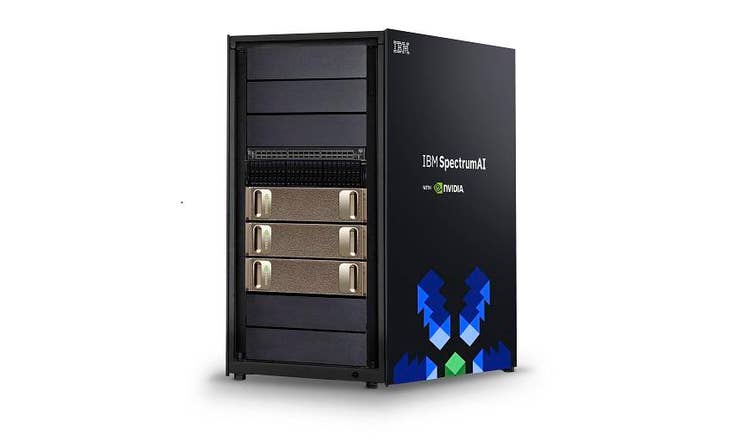IBM, Nvidia Partner On New Converged Infrastructure Optimized For AI

IBM Tuesday expanded its reach into the burgeoning artificial intelligence market with the introduction of a new converged infrastructure appliance marrying its all-flash storage technology with high-performance GPU-based servers from Nvidia.
Big Blue's IBM SpectrumAI is a new reference architecture optimized for AI workloads, said Eric Herzog, chief marketing officer and vice president of worldwide storage channels for IBM's storage division.
The IBM SpectrumAI is targeted at new markets just starting to open up for channel partners, Herzog told CRN.
[Related: IBM Doubles Down On Flash, NVMe As It Commits To Taking Storwize 100 Percent Through Channel]
These include autonomous driving, location-based advertising, manufacturing quality and warranty analysis, clinical drug trials, genomics, drilling exploration sensor analysis, consumer sentiment analysis and more, he said.
The new converged infrastructure for artificial intelligence workloads brings channel partners a comprehensive approach to the AI data pipeline, Herzog said.
"It is extensible and composable, and can span the data pipeline from ingest to archive," he said.
Best of all, Herzog said, the IBM SpectrumAI will go to market 100 percent via indirect sales channels.
The IBM SpectrumAI isn’t IBM's first foray into providing a converged infrastructure platform on which to run AI workloads.
IBM in June introduced its first AI-based reference architecture, but it combined IBM's FlashSystem all-flash storage with the company's Power-based servers, making it an all-IBM offering, Herzog said.
The first storage vendor to partner with Nvidia was Mountain View, Calif.-based Pure Storage, which in April introduced AI-Ready Infrastructure, or AIRI, which combines its all-flash FlashBlade storage with Nvidia's DGX-1 GPU-based platform and Arista networking. The company in May followed up with AIRI Mini, a lower-cost version featuring a lower-cost entry configuration and the option of Cisco Nexus 9000-based networking.
NetApp in August introduced its rival, the NetApp Ontap AI, which combines NetApp's AFF A800 all-flash storage array with end-to-end NVMe performance, Nvidia's DGX GPU nodes, and 100-Gbit Ethernet switches from Cisco into a converged platform for AI workloads.
Herzog said that IBM has differentiated its AI-focused converged infrastructure offerings in a number of ways, including having the most robust offering in the market thanks to its Power server line, as well as multiple price points for its Nvidia-based version.
IBM is also unique in its software stack for its IBM SpectrumAI, Herzog said.
The IBM SpectrumAI comes with Spectrum Scale, the company's scale-out file system designed for big data analytics, he said.
Options include the addition of OBM Cloud Object Storage for high-performance data archiving; IBM Spectrum Discover, which uses metadata to manage data; and IBM Spectrum Archive for archiving data to tape, he said.
The IBM SpectrumAI is based on IBM's FlashSystem all-flash storage array with all-NVMe performance, giving it a throughput of 120 GBps in a rack and over 30 GBps sustained random read in a 2U footprint.
Customers can scale the offering to up to nine Nvidia DGX-1 servers with up to two GPUs in a rack while scaling storage from a single 300-TB node to up to 8 Exabytes of data, Herzog said.
Customers will embrace the IBM Spectrum AI, and many will say that It's about time that IBM offered such a solution, said Kevin Carrington, vice president of sales at Lighthouse Computer Services, a Lincoln, R.I.-based solution provider and longtime IBM and Nvidia channel partner.
"Customers see the marriage of Nvidia GPU-based server technology with flash storage as fueling a multitude of business opportunities," Carrington told CRN.
Lighthouse Computer Services is already working with the IBM Power-based artificial intelligence platform in the health-care market, Carrington said. "This has definitely put a spring back into the step of Power," he said. "It made Power sexy again."
Whether Power-based or Nvidia-based, IBM's artificial intelligence platforms address real-world customer requirements, Carrington said.
"AI is everywhere," he said. "It's how we are consuming IT, and how the marketplace sees us as consumers. It's all around us, and it's happening today."